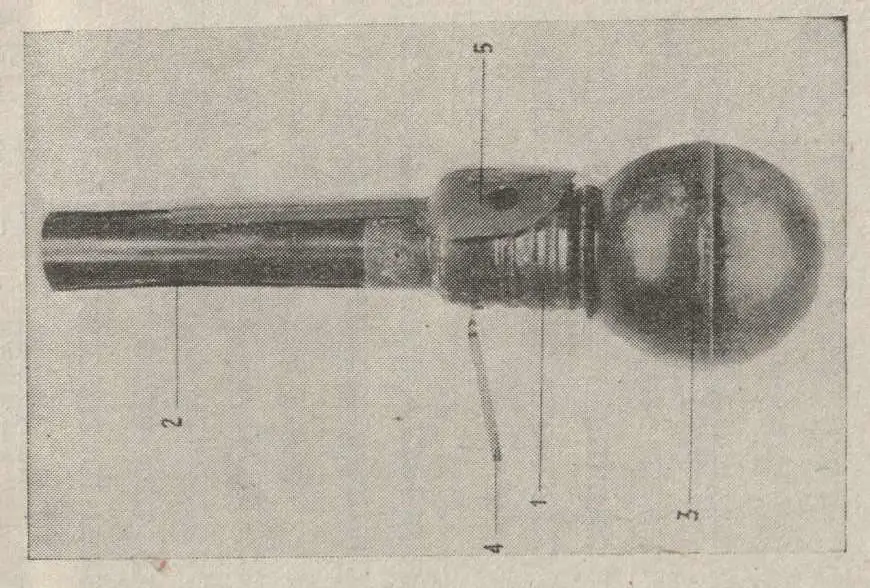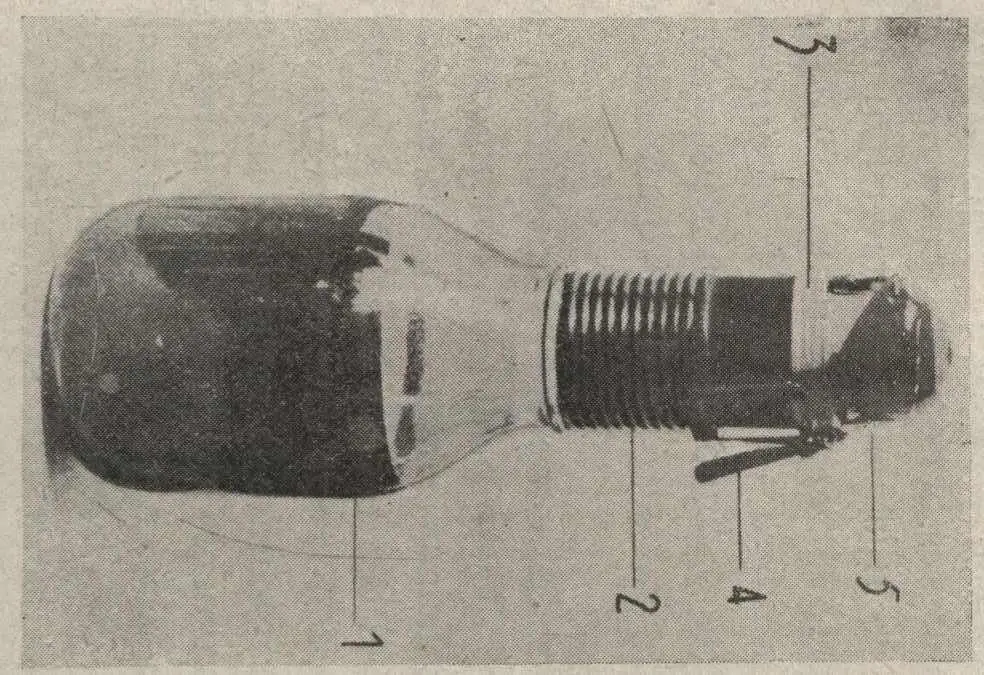Background on World War Two Italian Hand Grenade
In 1935, Italy adopted three similar types of hand grenade (Bomba a Mano) for the Regio Esercito. They include the Breda Mod. 35, Oderno Terni Orlando (OTO) Melara Mod. 35 and Societa Romana Construzioni Meccaniche (SRCM) Mod. 35. Because of Italy’s desire to rapidly build its stock of hand grenades, these three different manufacturers were used. Each of these hand grenades had to be launched to a distance of 20 to 30 meters.
Red Devil
They earned the nickname “Red Devil” by British forces because of their high volatility during the recovery of unexploded Italian hand grenades on the battlefield.

The three types of bomba a mano “Red Devil” hand grenades used by Italy in World War Two.
Breda Mod.35
The Breda Mod.35 bomba a mano entered production in 1935. It is considered the least effective of the three Italian hand grenade types. However, since Breda’s Brescia factory had the largest production capacity, the Breda Mod. 35 was the most common bomba a mano used.
Operation
The safety strip is pulled before throwing the grenade. As the grenade is thrown, the safety cap falls off. The safety cap is connected to the head by a brass band wrapped twice around the head. As the brass band unravels, it releases the safety bar thus exposing the detonator to the striker. A creep spring keeps the detonator from touching the striker until impact.

Component parts.
Variants
The hand grenade is color-coded for specific purposes.
- Burnished: Inert.
- White with Red Stripe: Reduced charge for training.
- Red: For offensive use.
- Breda Mod.40: A Mod.35 attached to a wooden handle and made of steel instead of aluminum. The size of the device is 241 mm.

Color coded Breda Mod.35 hand grenade identifies its purpose.
OTO Mod.35
The OTO Mod. 35 Bomba a mano entered service in 1935. The design is cylindrical in shape and simple. It was the most reliable of the three Italian hand grenade types but produced a smaller blast with less shrapnel.
The body is made of aluminum and painted red. The 36 grams of Tritolo binitronaftalina (TNT) detonates a lead ball containing lead shot. The explosion had a four-meter casualty radius. Production ended in 1945.
Operation
The safety tab is pulled and the grenade is thrown. This releases the safety cover which also pulls out the safety bar from the Allways impact fuze. This arms the grenade. Upon impact, the lead ball hits the firing pin causing detonation.
SRCM Mod. 35
Production of the bomba a mano SRCM Mod.35 offensive grenade began in 1935. It contains an aluminum outer shell and is the only Italian hand grenade with a fragmentation liner. It is easily recognized with the lettering “Societa Romana” on the safety cuff.
Operation
When thrown, the safety cap falls away. It is connected to the safety strip by a small chain. This pulls the strip out and arms the grenade. The SRCM Mod.35 also uses the Allways fuze.
The Italian Army utilized the SRCM Mod.35 until the 1980s.
Variants
The hand grenade is color-coded for specific purposes.
- Red: For offensive use.
- Red with Outer Shell Holes: Smoke (war period).
- Yellow: Smoke (pre-war).
- White with Red Stripe: For offensive use by the Regia Marina.
- Red with Yellow Line: High capacity TNT.
- Red with Brown and Blue Stripes: Reduced charge for training purposes.
- Upper Red Lower Black: Smoke/Incendiary. It also contains the lettering “F” and “F1” on the bottom.
Bomba a Mano Specifications
| Hand Grenade Model | Breda Mod. 35 | OTO Mod. 35 | SRCM Mod. 35 |
|---|---|---|---|
| Weight | 200 grams | 150 grams | 240 grams |
| Height | 96 mm | 75 mm | 85 mm |
| Diameter | 58 mm | 50 mm | 57 mm |
| Filling | TNT-dinitronaphthalene | TNT | TNT or dinitronaphthalene |
| Filling Weight | 63 grams | 36 grams | 43 grams |
| Mode of Detonation | Percussion on impact | Percussion on impact | Percussion |
| Range | 15 m | 15 m | 12 m |
Anti-Tank Grenades
Only in 1942 did Italy develop an anti-tank grenade. Two types of anti-tank grenades were developed. The Breda Mod.42, which used an explosive detonation and the OTO Mod. 42, which used an incendiary explosion.
Bomba a mano Controcarro BREDA Mod.42

Breda Mod.42
The Breda Mod. 42 utilized the same functional parts of the Breda Mod. 35 grenade. In essence, the anti-tank version added a handle and an explosive outer shell. The Mod.35 grenade, inside the shell, acted as the detonator. Including the explosive in the Mod.35 grenade, the Mod. 42 contained 637 grams of TNT. It weighed 1,050 grams with a height of 290 mm and a diameter of 115 mm.
The detonation was capable of piercing 20mm of armor and splintering 30mm. Breda produced approximately 10,000 examples. The recommended throwing distance is listed as 10-15m. However, the device may not be charged until 10-12 meters in flight. Once thrown, the user should lay flat on the ground or hide behind a solid barricade.
Bomba a mano Controcarro Incendiaria O.T.O Mod. 42

OTO Mod.42
Much like the Breda Mod. 35, the OTO Mod.42 is essentially an OTO Mod. 35 attached to a handle. The spherical shell surrounding the Mod. 35 contains flamethrower liquid and gasoline. The device weighed 1,120 grams with a shrapnel area of 10 meters. The effective range is 6 meters.
Additional references
Nicola Pignato, “Armi della Fanteria Italiana nella Seconda Guerra Mondiale”, Parma : Albertelli, 1971.